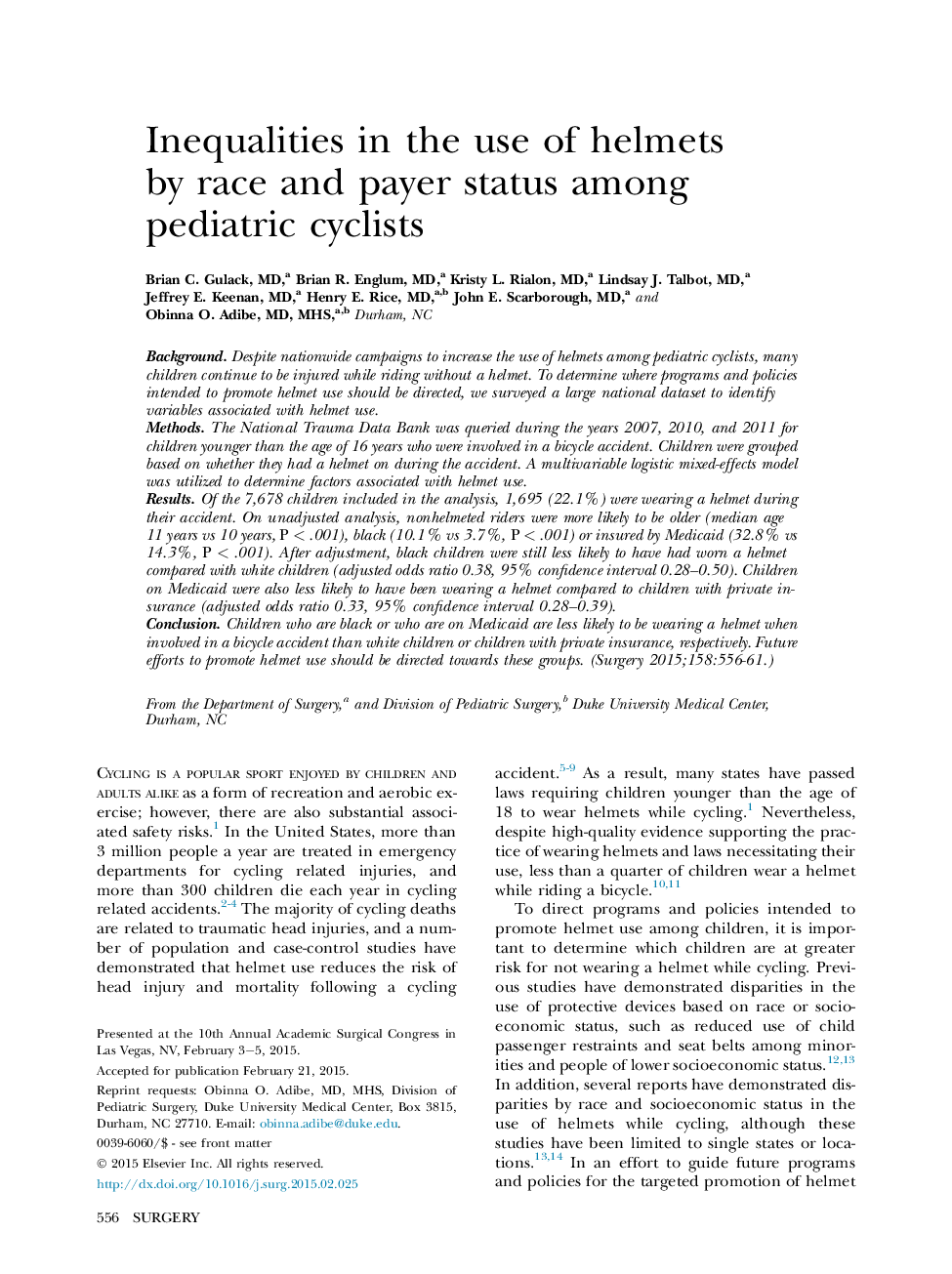| Article ID | Journal | Published Year | Pages | File Type |
|---|---|---|---|---|
| 4307028 | Surgery | 2015 | 6 Pages |
BackgroundDespite nationwide campaigns to increase the use of helmets among pediatric cyclists, many children continue to be injured while riding without a helmet. To determine where programs and policies intended to promote helmet use should be directed, we surveyed a large national dataset to identify variables associated with helmet use.MethodsThe National Trauma Data Bank was queried during the years 2007, 2010, and 2011 for children younger than the age of 16 years who were involved in a bicycle accident. Children were grouped based on whether they had a helmet on during the accident. A multivariable logistic mixed-effects model was utilized to determine factors associated with helmet use.ResultsOf the 7,678 children included in the analysis, 1,695 (22.1%) were wearing a helmet during their accident. On unadjusted analysis, nonhelmeted riders were more likely to be older (median age 11 years vs 10 years, P < .001), black (10.1% vs 3.7%, P < .001) or insured by Medicaid (32.8% vs 14.3%, P < .001). After adjustment, black children were still less likely to have had worn a helmet compared with white children (adjusted odds ratio 0.38, 95% confidence interval 0.28–0.50). Children on Medicaid were also less likely to have been wearing a helmet compared to children with private insurance (adjusted odds ratio 0.33, 95% confidence interval 0.28–0.39).ConclusionChildren who are black or who are on Medicaid are less likely to be wearing a helmet when involved in a bicycle accident than white children or children with private insurance, respectively. Future efforts to promote helmet use should be directed towards these groups.
